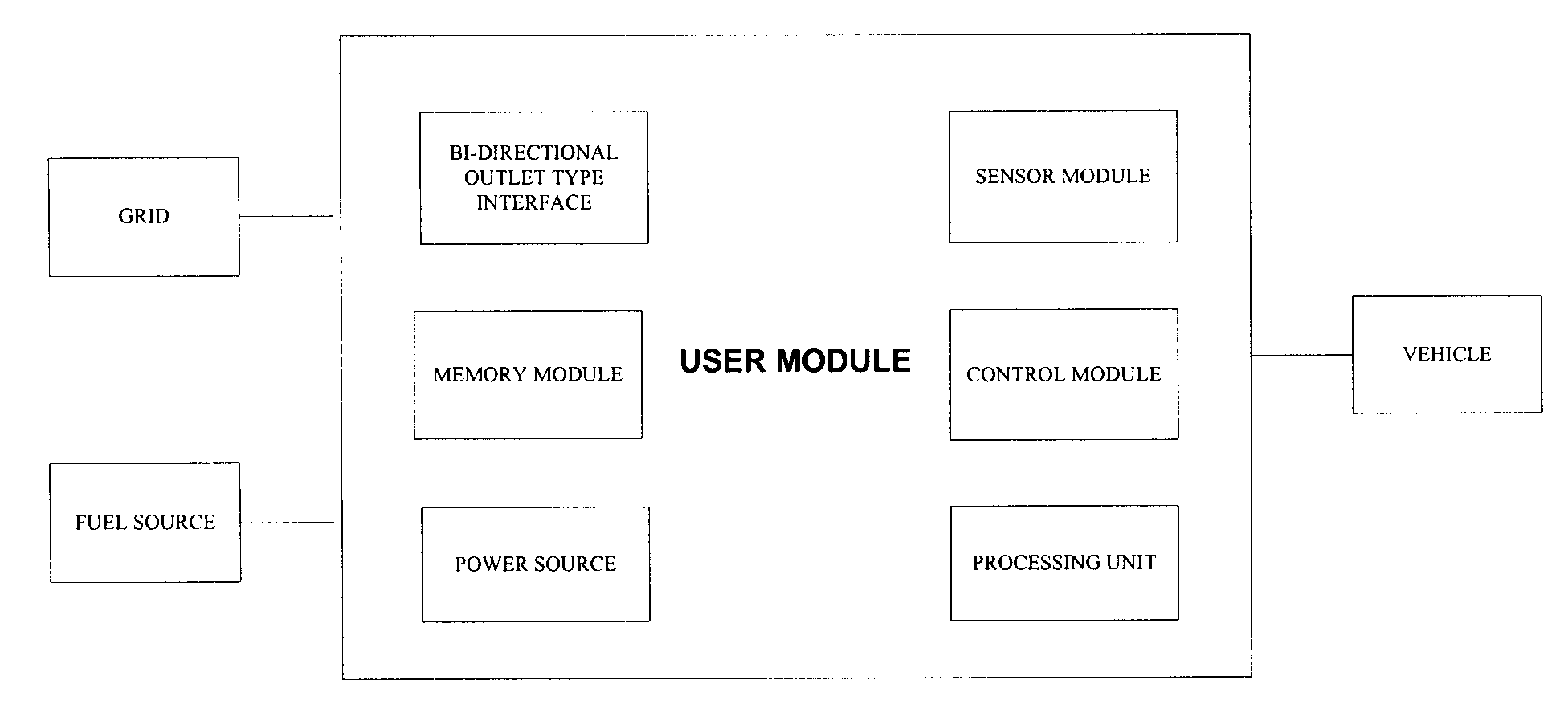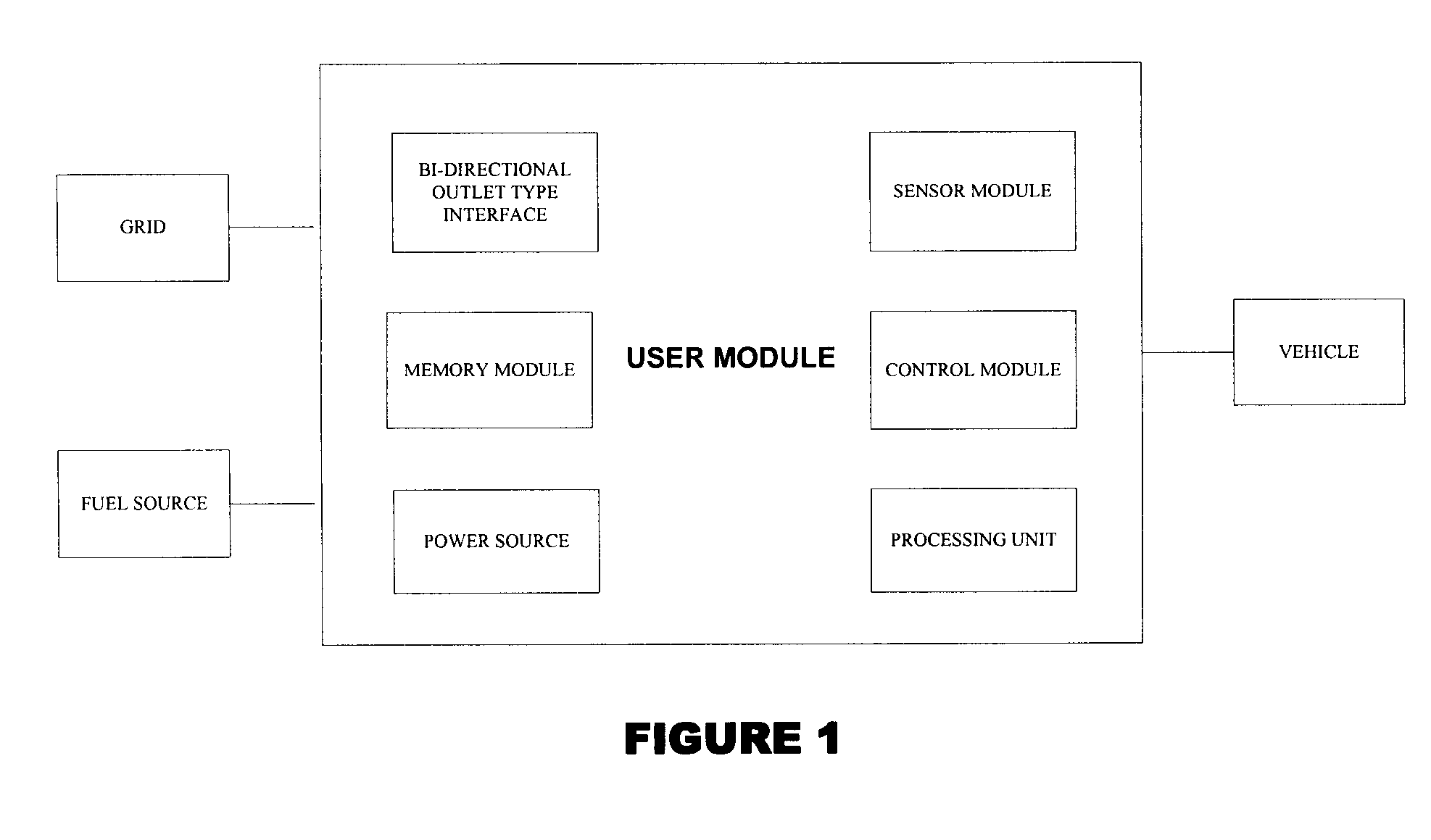System and method for transferring electrical power between grid and vehicle
a technology of electrical power transmission and grid, applied in the direction of electric propulsion mounting, battery/fuel cell control arrangement, instruments, etc., can solve the problems of no longer supporting distributed generation, the cost of recharging the vehicle in a static pricing scheme would outweigh the savings from pushing back, etc., to reduce the amount of load on the grid, increase the available power, and improve the effect of efficiency and rapid respons
- Summary
- Abstract
- Description
- Claims
- Application Information
AI Technical Summary
Benefits of technology
Problems solved by technology
Method used
Image
Examples
Embodiment Construction
[0046]The present invention discloses a system for transferring electrical power between a grid and at least one vehicle. The system further provides an electrical isolation between the vehicle, the grid and a building in case of a brownout or a blackout event. The system also facilitates in providing electrical power to the building from the vehicle. In one embodiment of the invention, at least one battery is used as the means for storing electrical power in the vehicle. However, other electrical power storage devices can also be used, without limiting the scope of the invention.
[0047]The system comprises of a user module connected to the grid and to the vehicle via a communication network. The user module is further connected to a fuel source. The communication network comprises of Communication Over Power Line (COPL), Bluetooth, IEEE 802.15.4, ZigBee, cellular wireless network or IP based computer network. The communication network uses protocols such as, for example, BACnet, Lon...
PUM
 Login to View More
Login to View More Abstract
Description
Claims
Application Information
 Login to View More
Login to View More - R&D
- Intellectual Property
- Life Sciences
- Materials
- Tech Scout
- Unparalleled Data Quality
- Higher Quality Content
- 60% Fewer Hallucinations
Browse by: Latest US Patents, China's latest patents, Technical Efficacy Thesaurus, Application Domain, Technology Topic, Popular Technical Reports.
© 2025 PatSnap. All rights reserved.Legal|Privacy policy|Modern Slavery Act Transparency Statement|Sitemap|About US| Contact US: help@patsnap.com



